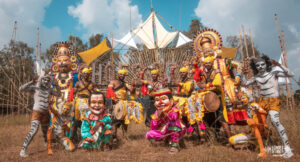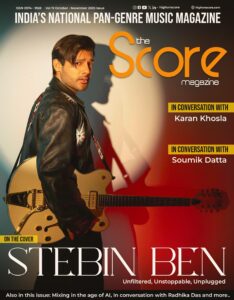A loud crash bellows as a girl falls off her horse, the harness clashing together, her subtle thump on the soft sand. Her horse shakes violently its hooves create and erratic CLOP CLOP sound as it runs away. I’m watching her from within a local movie theatre. Its late night outside but the movie is set in the afternoon – and I fully believe it is when coupled with the sounds of bird chirpings. I’m immersed into the movie. But take away the sounds from the film? Would I be feeling the same way?
Movies today are a lot more immersive than they have ever been, cleverly incorporating the use of all our senses to gratify our needs for entertainment. It’s not often one thinks about sounds in movies, and by sounds I don’t mean just background music or just the ambient noise. It is the sound of footsteps in a long marble hall; it’s the whoosh of the sea breeze into the cove of your ear; its bones breaking and flesh tearing apart; it’s the sound of anklets on a woman dancing and it could be the sound of stabbing – it doesn’t always sound pretty but it sounds realistic. The sounds I’m talking about are the incidental ones. The ones that make the movie seem natural or set in the real world.
It’s HIGHLY unlikely there’s any real bone breaking and flesh tearing happening on set. So who makes the sound? Hence, the introduction of the Foley artist. Foley and its processes is extremely developed and recognised in the West courtesy of the talents of Jack Foley, a sound engineer who worked in post-production who pioneered the field in the 1920s and 30s. In India, Foley is a small sector in the Bollywood industry. They’re the ones who recreate sounds using an assortment of stuff: pots and pans, cloth and sand, coconut shells and brushes, wooden crates, fruits! How?
A foley artist would simply tell you to snap a handful celery or carrot apart if you want something to sound like bones breaking. Foley artists are geniuses in their own way, in their dimly lit, heavily stocked studios they create sounds for the craziest things, things that don’t exist in the natural world- like web slinging from spider man, or wizards and their spells. A Foley artists imagination is wild. It has to be if they can think up that the crackle of fire could be replicated by simply scrunching plastic. They’ve figured out how to use empty coconut shells to make the sound of horse hooves galloping through the land. They just press the shells on a muddy surface rhythmically matching the visual in the film. They cut open raw coconut with fleshy insides to sound like chopping a head off.
Sounds don’t just characterise scenes in the film it also gives you a perspective or context. It’s why in an adventure film if you hear the water rushing through before you can even see it you might assume it’s a stream. You’ll unintentionally want to navigate the lost kids in the movie to the stream. Sounds can also create moods.
The sound of thunder and drizzling can make you feel gloomy, birds chirping could be associated with a bright morning, empty halls and resonating footsteps could give you a sense of being watched or a sense of loneliness and when coupled with matching visuals the movies and sounds create worlds altogether.








